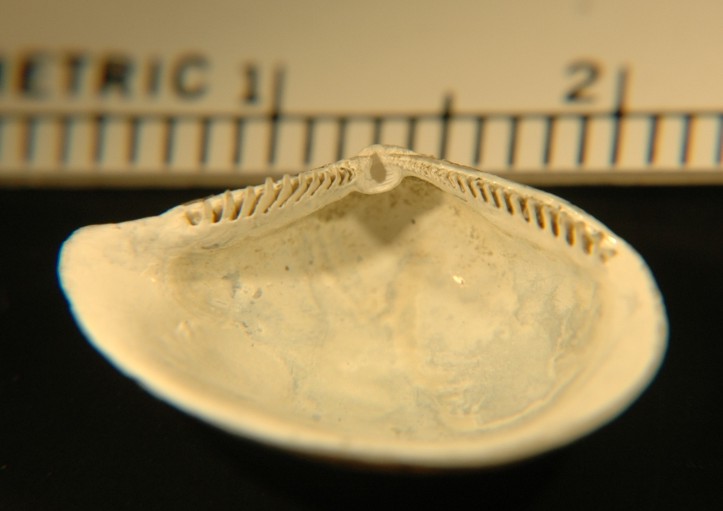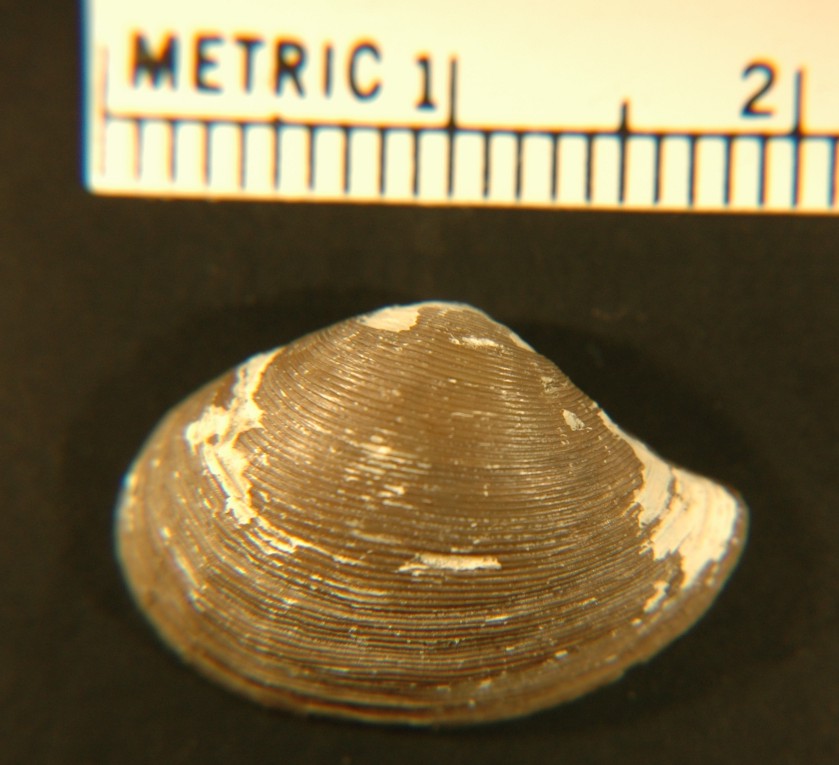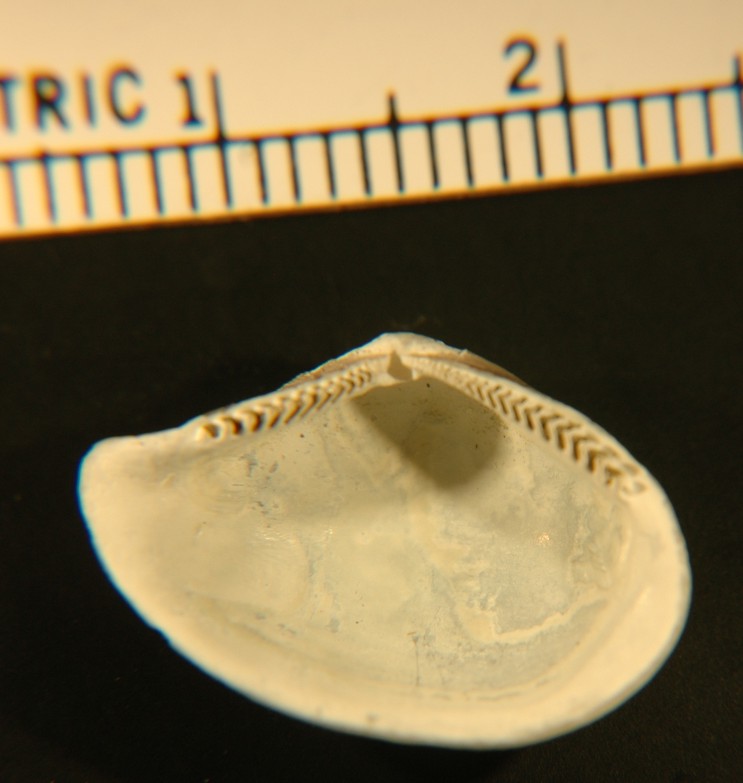How to Distinguish from Similar Species: Yoldia amygdalea has umbones posterior to the middle and the length is twice the height. Yoldia seminuda has concentric lines crossing the growth lines. Yoldia thraciaeformis has a swollen shell.
Geographical Range: Arctic Ocean to Puget Sound, North Atlantic
Depth Range:
Habitat:
Biology/Natural History:
Yoldia is one of a group of "primitive" "Protobranch" bivalves which are different structurally from other bivalves. Most protobranchs live with the anterior end down in sediment. They have two small, bipectinate gills on the posterior end. Water is circulated from the anterior end toward the posterior end and across the gills, rather than in at the posterior ventral end, across the gills, and out at the posterior dorsal end as in most clams. The protobranchs usually have long extensions of the mouth called labial palps, which they extend into the sediment and pick up particles for feeding. Some Protobranchs, including Yoldia, also have a small flattened "sole" on their foot. The sole has left and right halves which can be folded together to collapse the foot into a narrow profile. The foot is then inserted into the sediment, the sole is unfolded to its wide configuration, and the foot is retracted to draw the clam down into the sediment.
Members of Subclass Palaeotaxodonta have equal valves
with taxodont
dentition and protobranch (bipectinate)
gills.
| Return to: | |||
| Main Page | Alphabetic Index | Systematic Index | Glossary |
References:
Dichotomous Keys:Kozloff 1987, 1996
General References:
Morris, 1966
Scientific Articles:
Web sites:
General Notes and
Observations: Locations,
abundances, unusual behaviors:
Members of Order Nuculoida have taxodont dentition. Yoldia myalis has about 12 teeth on each side of the umbo.

The taxodont
hinge teeth project strongly from the hinge plate. The chondrophore
can be seen in the center.
Authors and Editors of Page:
Dave Cowles (2007): Created original page
CSS coding for page developed by Jonathan Cowles (2007)

